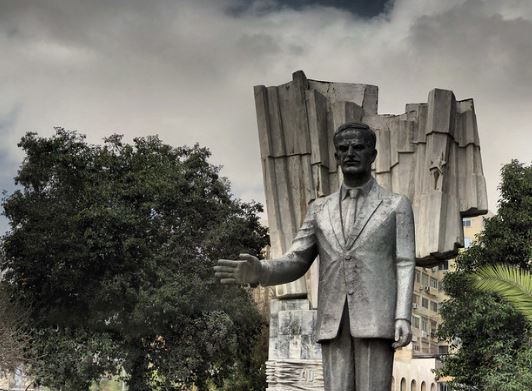BY BRIAN WILLIAMS
For the first time since the defeat of the mass popular uprising against the Bashar al-Assad regime in Syria in 2011, sizable new protests against dire economic conditions and Assad’s dictatorial rule erupted in mid-August and have continued into September in the government-controlled southwestern province of Sweida. This is the center of the country’s Druze population.
The actions were initiated in response to the government slashing fuel subsidies, which more than doubled the cost of gasoline. This further accentuates the unlivable conditions working people have faced since military intervention by Moscow and Tehran enabled the Assad regime to retake swathes of the country and restabilize its rule.
At least 500,000 civilians were killed and half of Syria’s prewar population of 23 million has been displaced. About 90% of Syrians now live in poverty, according to the United Nations.
“Our demands are firstly political,” said an unnamed young woman in a video from one of the recent protests in Sweida. “We want dignity and we want freedom.”
Over the last three months, the Syrian pound lost 80% of its value, hitting working people particularly hard. While the government doubled state salaries to about $13 a month, a monthly food basket in June cost at least $81, according to the U.N. World Food Program.

The Syrian pound is trading at around 15,000 to the US dollar while in 2011 before the Syrian uprising it was trading at less than 50 to the US dollar.
Amid rampant inflation, some have taken to using backpacks instead of wallets to carry the wads of cash needed to make simple everyday purchases. “If I buy (my son) two containers of milk, I’d have spent my entire month’s salary,” Damascus resident Ghaswan al-Wadi told The Associated Press Aug. 29.
During the past decade of conflict between Assad and opposition forces, Syria’s Druze population for the most part stood aside, but this time they’re at the center of the actions. Solidarity protests have taken place in other cities, including Damascus, Aleppo, Latakia, Tartus and Azaz.
“These are the largest protests that have taken place in Sweida,” Rayan Maarouf, editor of the local Suwayda24 news website, told AP. “At one point most people were neutral or unsure, but now they don’t believe their lives can improve without political change.”
While the government deployed its police force in an effort to prevent demonstrations in Damascus, it has so far held off from moving against the Druze-led protests.
But three people were wounded on Wednesday when bullets were fired at anti-regime protesters in Sweida in the first reported use of violence in weeks-long demonstrations in the Druze-majority province.
The Militant

Leave a Reply
You must be logged in to post a comment.